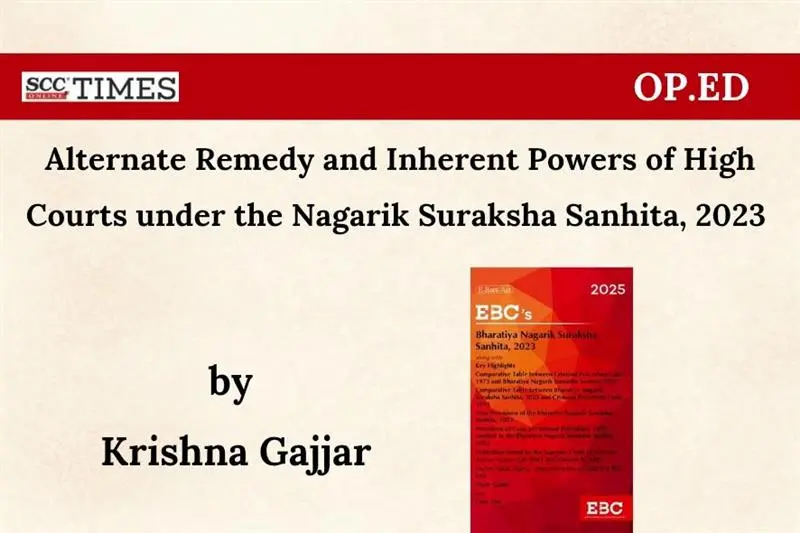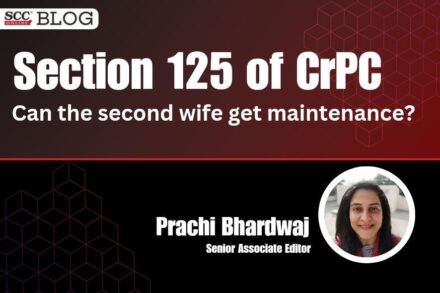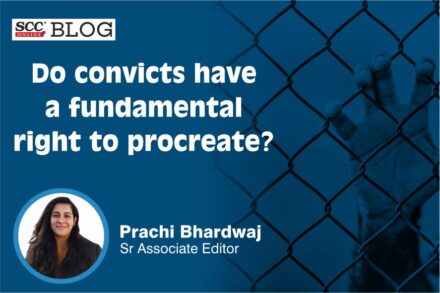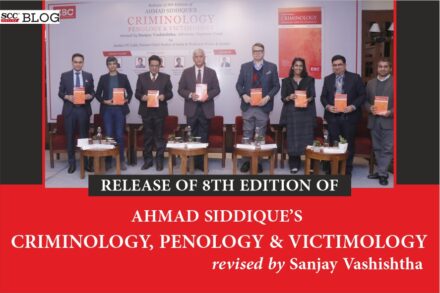“Nothing in this Code shall be deemed to limit or affect the inherent powers of the High Court to make such orders as may be necessary to give effect to any order under this Code, or to prevent abuse of process of court or otherwise to secure the ends of justice.”
Introduction
The Criminal Procedure Code, 19731 replaced the British enacted law of the Code of Criminal Procedure, 18982. In the Code of Criminal Procedure, 1898, Section 561-A3 [which was added through the Criminal Procedure (Amendment) Act, 1923] had the same language that of Section 4824 of the Criminal Procedure Code, 1973.5 Section 5286 of the Nagarik Suraksha Sanhita, 20237 has adopted the language as used in Section 482 of the Criminal Procedure Code, 1973.
Section 528 is a “saving clause” where the inherent powers of the High Court are saved and not conferred by the statute. Unlike revisional jurisdiction, appellate jurisdiction or original jurisdiction, inherent jurisdiction is the one which is inherited by the High Court being the highest court of the State to prevent injustice caused by the functioning of the subordinate court.
According to one school of thought, it was believed that vesting of inherent powers is necessary to resolve difficulties or impediments in the conclusion of a trial for a given situation where the Code is silent. Whereas, another school of thought propounded the view that courts should not have inherent powers in relation to codified law unless the Code is specifically spelt out in the enactment which can strictly be used to bridge gaps and not to take recourse where there are conflicts in provisions of Code.
Analysis
It is relevant to understand the application of Section 482 to cure any defects of justice, especially when the section itself states that nothing in the Code would be limiting or barring the power of the High Court when acting under Section 482.
In Madhu Limaye v. State of Maharashtra, it was held that the Bar under Section 397(2)8 is not applicable when the application is filed invoking the inherent jurisdiction of the High Courts and the proceedings are abuse of the process of court.9 Therefore, revision filed against an interlocutory order can only be filed invoking inherent jurisdiction and not revisional jurisdiction. Interlocutory orders are described by Lord Esher M.R. in Salaman v. Warner as:
If their decision, whichever way it is given, will, if it stands, finally dispose of the matter in dispute, I think that for the purposes of these rules it is final. On the other hand, if their decision, if given in one way, will finally dispose of the matter in dispute, but, if given in the other, will allow the action to go on, then I think it is not final, but interlocutory.10
Therefore, it can be safely said that Section 482 is applicable barring all the Bars in the Code when: (i) there is a need to pass an order to give effect to an order under the Code; (ii) to stop abuse of process of court; and (iii) to meet the ends of justice.
However, High Courts being the Supreme Court of the State must use this power sparingly and wisely as any order passed by the Court would be binding to the subordinate courts.
In R.P. Kapur v. State of Punjab11, scope of Section 561-A was elaborated by stating that High Courts should be reluctant to pass any interlocutory order while the matter is pending but it also has the power to quash the complaint when no offence is made out from first information report (FIR) itself or no evidence is there to support the same. However, High Courts cannot examine the evidence under Section 561-A. In cases where there is abuse of process of any court or to secure the ends of justice, the High Court must exercise its inherent powers.
Supreme Court took the view that High Court under the ambit of Section 482, cannot commit or omit something which is “expressly barred” by the Code, for example, it cannot review the case or alter the judgment except to correct clerical errors or mathematical arithmetical errors.12
When it comes to revision of cases where the order challenged is not an interlocutory order, Section 482 is maintainable as more or less the scope of both sections are same.13
In G. Sagar Suri v. State of U.P.14, it was held that it is the duty of the courts under Section 482 to check if any offence of civil nature is not given the cloak of criminal offence. Any such event would amount to undue harassment on the accused and to overcome such illegality, High Courts must use the inherent powers and quash such complaints. In no way, criminal law can be a shortcut to other remedies. The same is the purpose of the section as specifically to “prevent the abuse of the process of court”.
However, in 2005, the Bombay High Court laid down the law that in the presence of an alternate remedy under Section 397, an application under Section 482 is not maintainable as the alternate remedy is to be exhausted first.15
However, the same was overruled by the Supreme Court in Dhariwal Tobacco Products Ltd. v. State of Maharashtra16 stating that only because a revision petition is maintainable under Section 397, the same by itself would not constitute a Bar for entertaining an application under Section 482 of the Criminal Procedure Code, 1973.
However, in Mohit v. State of U.P.17 Supreme Court held that the availability of alternate remedy is a bar to an application under Section 482. Given the conflicting views taken by the Supreme Court, the three-Judge Bench was constituted to settle the issue in Prabhu Chawla v. State of Rajasthan18, Supreme Court held that the bar under Section 397(2) will not be effective in the case of interlocutory orders when inherent jurisdiction is invoked as anything and everything is maintainable to prevent abuse of process of court or to meet the ends of justice. Even otherwise if the impugned order is not interlocutory in nature, to meet the ends of justice inherent jurisdiction of the High Court can be invoked.
High Courts being the Supreme Court of the State have powers to quash the proceedings which the subordinate courts do not possess. Therefore, the aggrieved person can directly approach the High Court under Section 482 instead of facing the trial in order to prevent prolonged harassment. Even otherwise, instead of filing a revision application before the Sessions Court, a direct quashing is maintainable where there is gross injustice involved. However, if the same gets rejected it can strongly prejudice the Sessions Court when the revision application is filed and therefore, it may not be practically desirable.
In Abasaheb Yadav Honmane v. State of Maharashtra19, the Full Bench Court of the Bombay High Court held that even though the non obstante clause of Section 482 makes it widely applicable, then too the courts cannot compound the non-compoundable offence due to the Bar laid down in Section 320(9)20 of the Criminal Procedure Code, 1973. Non-compoundable crimes are crimes considered against the public at large and not against individuals. However, quashing is permissible if it satisfies any of the three parameters of the inherent powers regardless of the Bar contained in Section 320 as quashing and compounding are two different concepts.
In State of Karnataka v. L. Muniswamy21, it was held by the Supreme Court that when the trial is pending and charge is yet to be framed, the High Courts by merely invoking inherent jurisdiction cannot take upon itself the task of appreciating the material-on-record and put a premature end to the case. However, quashing is permissible only if the continuation of such trial amounts to abuse of the process of the Court and it is necessary to do so to meet the ends of justice. The ends of justice are higher than the ends of mere law though justice has got to be administered according to the laws made by the legislature. The compelling necessity for making these observations is that without a proper realisation of the object and purpose of the provision which seeks to save the inherent powers of the High Court to do justice, between the State and its subjects, it would be impossible to appreciate the width and contours of that salient jurisdiction.
In Palaniappa Gounder v. State of T.N.22, the Supreme Court held that the application for compensation cannot be entertained by the High Courts under Section 482, as Section 35723 is clearly applicable to the Revisional Courts. However, the same does not affect the power of the High Courts to deal with applications where the section is wrongly described in the said application as made under inherent jurisdiction instead of revision jurisdiction, and in such circumstances, High Courts can treat the same application as under its revision jurisdiction. Therefore, such technical aspects of the draft can be overlooked if while exercising the power, the High Courts do not overstep the jurisdiction as conferred by the Code.
In State of Orissa v. Ram Chander Agarwala24, the Supreme Court held that Section 561-A was inserted through an amendment to save the inherent powers. The powers of the High Courts are not limited or affected by the provisions of the Code but at the same instance, it cannot be invoked to do something that is expressly prohibited by the Code. The savings of inherent power is only for giving effect to orders passed under the Code, to prevent abuse of the process of court or otherwise to secure the ends of justice.
Justice Krishna Iyer in Raj Kapoor v. State25 following the law laid down in Madhu Limaye case26 stated that an easy resort to inherent power is not right except under compelling circumstances. Not that there is jurisdiction but that inherent powers should not invade areas set apart for specific power under the Code. In the category of orders that are more than interlocutory orders and less than a final order, a tertium quid, revision under Section 397 is not permissible by the Code but recourse can be sought to revoke the inherent powers of the Court under Section 482. The limitation while exercising the inherent jurisdiction is self-restraint and nothing more.
In MCD v. Ram Kishan Rohtagi27, it was held that in some cases the powers of the Court may be overlapping but it is a settled position of law that inherent powers can only be invoked when there is no other alternative remedy available and not where there is specific remedy provided by the law. It has to be used sparingly. The criminal complaint can be quashed in the initial stages when on the face of the complaint itself or the papers accompanying the same, no offence is made out.
Notably, in Ranjan Kumar Manchaananda v. State of Karnataka28 it was held that inherent jurisdiction is not exercisable in order to nullify the bar of limitation laid down under Section 397(3) which clearly states that revision on revision is not maintainable, if that was to be permitted every revision application facing the Bar of Section 397(3) of the Criminal Procedure Code, 1973 could be labelled as one under Section 482.
While examining the scope of Section 482 for imposition of costs, the Supreme Court in Mary Angel v. State of T.N.29 held that for doing justice, the High Courts, being the Supreme Court of the State can exercise inherent powers in accordance with law where no express provision is available to do a particular thing and express powers do not negate the existence of such powers. It is true that under the Code, specific provisions for awarding costs are Sections 342, 357 and 359 which do not expressly empower High Courts to award costs but at the same time, there is no specific Bar that in other cases, cost could be awarded. Therefore, imposition of cost is permissible under inherent jurisdiction if the same is either to give effect to any order passed under the Court or to prevent abuse of the process of the Court or to meet the ends of justice. Awarding of such cost can be exemplary and therefore, these powers should be exercised sparingly in most appropriate cases and are not limitless but are to be exercised judiciously.
In Arun Shankar Shukla v. State of U.P.30, the Supreme Court stated that the expressions “abuse of the process of law” or “to secure the ends of justice” do not confer unlimited jurisdiction on the High Court and the alleged abuse of process of law or the ends of justice could only be secured with accordance of law including the procedural law and not otherwise. Section 482 does not empower the courts to intervene at the crucial stage of trial and the statutory right to appeal is always open.
In Puran v. Rambilas31, Supreme Court again clarified that High Courts can exercise the inherent powers under Section 482 being not affected by the provisions of Section 397(3) in order to secure the ends of the justice. Any such refusal to exercise inherent powers maybe a self-imposed restriction.
The Supreme Court in Dinesh Dutt Joshi v. State of Rajasthan32 held that the principle embodied in Section 482 is based upon the maxim: quando lex aliquid alicui concedit, concedere videtur id sine quo res ipsa esse non potest (i.e. when the law gives anything to anyone, it gives also those things without which the thing itself would be unavailable). Therefore, no new powers are conferred by this section but it “declares” that the High Courts possesses the inherent power for the purposes stated therein. This section has been embodied to cover the lacunae sometimes found in the procedural law. However, such extraordinary powers have to be reserved as far as possible.
Enhancing the law laid down in R.P. Kapur case33, Supreme Court in State of Karnataka v. M. Devendrappa34 stated that the courts while exercising the power under Section 482 has to remain conscious about the distinction between a case where there is no legal evidence or where there is evidence which is clearly inconsistent with the accusations and a case where there is a legal evidence which on appreciation may or may not support the accusations. The High Courts cannot ordinarily embark upon inquiry if the evidence is reliable or not or on a reasonable appreciation of it the accusations will be sustained or not. The power has to be exercised in the rarest of the rare case where there is apparent abuse of the process of court or it is necessary to secure the ends of justice or to give the effect of an order. However, it is neither possible nor desirable to lay down inflexible rules for the exercise of inherent powers as no legislative enactment dealing with procedures can provide for all possible cases that can arise. Inherent powers are to be exercised sparingly, carefully and with caution and only when it is justified by the test laid down in the section itself. When no offence is disclosed by the complaint, the courts may examine the facts. It is permissible to look into the material to assess what the complainant has alleged and if any offence is made out even if the allegations are accepted in toto but the evidence cannot be examined as the same is the function of the trial court. It should normally refrain from giving prima facie decisions where the entire facts are incomplete and hazy, more so evidence is yet to be produced before the trial court. In the presence of the remedy of trial, the court cannot intervene under Section 482.
In Hamida v. Rashid35, the Supreme Court made it clear that when bail is granted for the offences alleged in the first information report and later if it is converted to a more serious offence, the accused has to follow the procedure of law as laid down under Section 439 and cannot directly take refuge by invoking Section 482. Inherent powers cannot be invoked when there is an alternate remedy available and there is no miscarriage of justice.
In another case of Divine Retreat Centre v. State of Kerala36, Supreme Court held that Section 482 does not confer “unlimited arbitrary jurisdiction” on the High Courts. The inherent powers can only be exercised when any of the three circumstances arise. Therefore, in the midstream of the investigation, the investigating agency cannot be changed especially based on anonymous petitions addressed to a named Judge. Also, such communications cannot be converted into suo motu proceedings for setting the law in motion. Neither accused nor the complainant/informant is entitled to choose their own investigating agency to investigate the crime in which any personal interest may be there. However, under Article 22637 High Courts can issue directions at the instance of the aggrieved person, if convinced that the investigating officer is acting in mala fide and a clear abuse of powers and non-compliance with the provisions under Chapter XII38 of the Criminal Procedure Code, 1973. The powers are to be used in the rarest of the rare case not directing how to conduct the investigation but insisting for observance of the process in accordance with the Code.
In Simrikhia v. Dolley Mukherjee39, elaborating the difference between the bar of review as under Section 36240 and inherent powers, the Supreme Court held that when there is no change in circumstances, the Court under the guise of Section 482 cannot alter its own judgment. The same is contrary to the spirit of the section itself as it is in itself an abuse of process of the Court. Also, if a matter is covered by the provision of the Code, the Court cannot give a go-by to the statutory provisions and instead evolve a new provision in the garb of inherent jurisdiction.
Conclusion
Therefore, it can be safely concluded that each case is a unique case under Section 528. The High Court cannot bypass any procedure as envisaged under the procedural law unless there is specific abuse of process of court or to give effect to any order of court or to secure the ends of justice. If there is a specific bar generated by other provision of the law, the inherent power cannot be exercise neither the High Court can act as a trial court. The High Court, being the highest Court of the State, under inherent jurisdiction works as a guardian of rights provided under the criminal law.
*Advocate, Gujarat High Court.
1. Criminal Procedure Code, 1973.
2. Code of Criminal Procedure, 1898.
3. Code of Criminal Procedure, 1898, S. 561-A.
4. Criminal Procedure Code, 1973, S. 482.
5. Mangal Singh v. Danvindra Kaur, 1975 SCC OnLine All 181.
6. Nagarik Suraksha Sanhita, 2023, S. 528.
7. Nagarik Suraksha Sanhita, 2023.
8. Criminal Procedure Code, 1973, S. 397(2).
10. (1891) 1 QB 734, 735.
12. Simrikhia v. Dolley Mukherjee, (1990) 2 SCC 437.
13. Amar Nath v. State of Haryana, (1977) 4 SCC 137.
15. V.K. Jain v. Pratap V. Padode, 2005 SCC OnLine Bom 684.
20. Criminal Procedure Code, 1973, S. 320(9).
23. Criminal Procedure Code, 1973, S. 357.
28. 1990 Supp (1) SCC 132.
37. Constitution of India, Art. 226.







Lower criminal courts have no inherent power unlike Munsiff courts under section 151 CPC
This fact many lawyers and subordinate courts do not know